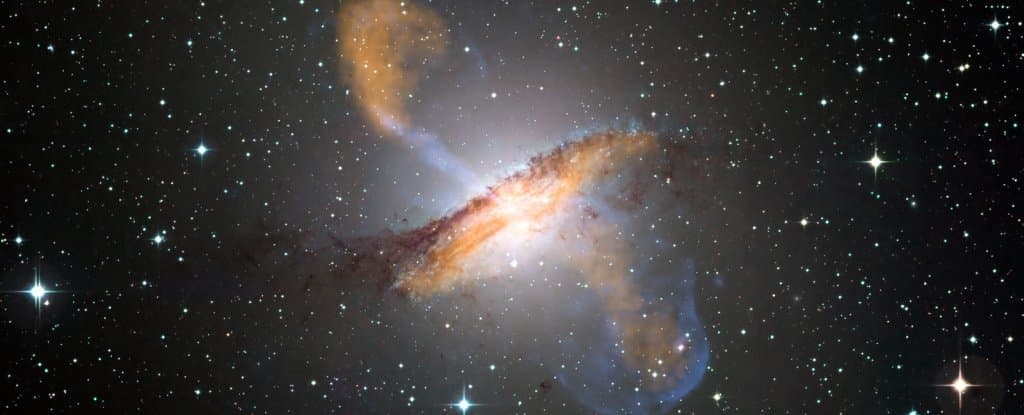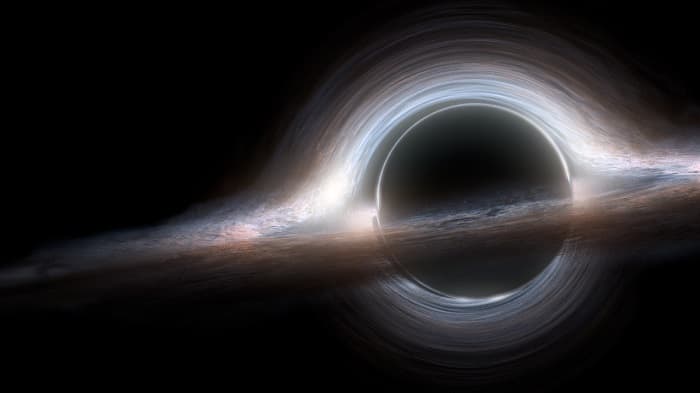UC researchers detect supermassive black holes regulating the formation of stars
Supermassive Black Holes have always been the area of interest for researchers and cosmologists. The year 2017 has witnessed many new research publications which have proved their importance. Recently one that appeared in December 2017 in #-Link-Snipped-#, emphasized on their abilities in controlling the dynamics of star formation. However, none of them had a clear evidence until researchers at the University of California - Santa Cruz found a breakthrough. While investigating the historical data of Supermassive Black Holes, the cosmologists discovered a relation between their masses and the rate of star formation in active galaxies. They believe it is the first direct evidence where one can notice the effect of such gigantic masses on the dynamics of star formation.

Centaurus A. - One of the active regions for star formation - Image Credit - NASA
The team has gathered details about the masses of the supermassive black holes which have earlier been reported in the previous findings. Then they studied the optical spectra of the galaxies in order to quantify the number of stars which are active or have become dormant.
Upon correlating the findings, they found that the smaller the mass of the supermassive black hole the more is the rate of star formation in the active galaxies. Simply saying, those galaxies which have gigantic supermassive black holes have somehow switched off the cycle of formation of stars. Though the relationship has been identified, the reason behind such dependency is still unknown.

An artist's impression of Supermassive black hole
A group of researchers believes that this relationship is because the black holes with smaller masses continue gaining masses and radiating energy into the active galaxies which after a particular instant makes the active matters dormant resulting in slowing down the process of formation of stars and ultimately switching it off.
Although there are many ways through which black holes can radiate energy into the active galaxies, the researchers are not sure which one is the most effective one. They are now trying to find any sign that further simplifies these intricacies.
The science behind the formation of stars is as intricate as pinpointing the origin of our universe. The stochastic dynamics is difficult to be comprehended as there are various factors worth considering. Only the suggested theories backed by numerical simulations allow researchers to articulate it in the best way possible. There was no quantitative evidence backing the role of black holes in star formation, but now it has been established that not only black holes shape the galaxies but it also determines the rate of star formation in active regions of the universe.
A detailed work of the researchers has been published in the paper 'Black-hole-regulated star formation in massive galaxies' which has featured in the journal 'Nature'.
Source - #-Link-Snipped-#

Centaurus A. - One of the active regions for star formation - Image Credit - NASA
The team has gathered details about the masses of the supermassive black holes which have earlier been reported in the previous findings. Then they studied the optical spectra of the galaxies in order to quantify the number of stars which are active or have become dormant.
Upon correlating the findings, they found that the smaller the mass of the supermassive black hole the more is the rate of star formation in the active galaxies. Simply saying, those galaxies which have gigantic supermassive black holes have somehow switched off the cycle of formation of stars. Though the relationship has been identified, the reason behind such dependency is still unknown.

An artist's impression of Supermassive black hole
A group of researchers believes that this relationship is because the black holes with smaller masses continue gaining masses and radiating energy into the active galaxies which after a particular instant makes the active matters dormant resulting in slowing down the process of formation of stars and ultimately switching it off.
Although there are many ways through which black holes can radiate energy into the active galaxies, the researchers are not sure which one is the most effective one. They are now trying to find any sign that further simplifies these intricacies.
The science behind the formation of stars is as intricate as pinpointing the origin of our universe. The stochastic dynamics is difficult to be comprehended as there are various factors worth considering. Only the suggested theories backed by numerical simulations allow researchers to articulate it in the best way possible. There was no quantitative evidence backing the role of black holes in star formation, but now it has been established that not only black holes shape the galaxies but it also determines the rate of star formation in active regions of the universe.
A detailed work of the researchers has been published in the paper 'Black-hole-regulated star formation in massive galaxies' which has featured in the journal 'Nature'.
Source - #-Link-Snipped-#
0
